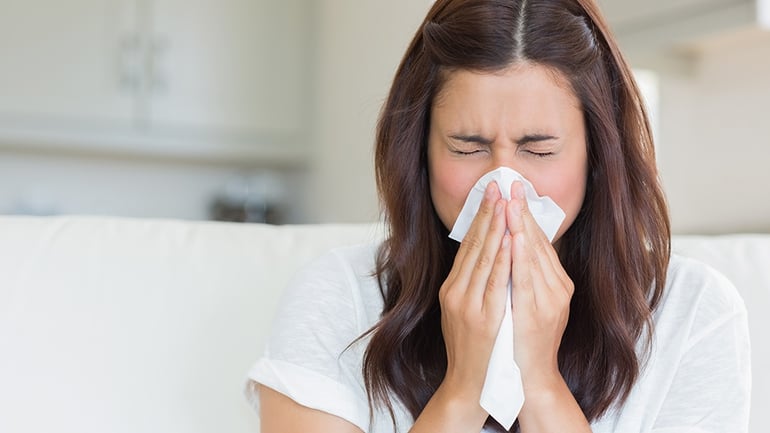
According to the American Academy of Allergy, Asthma and Immunology, pollen season can begin as early as February and last through October. In Maryland, we’re in the thick of it, already sneezing, feeling stuffy, and wiping away watery eyes.
To take action against seasonal allergies, Warner Service has a few tips for you to follow:
- Focus your spring cleaning efforts on areas of your home where allergens tend to accumulate. This includes air filters, bedding, upholstered furniture, and carpeting.
- When you clean for the spring, wear a surgical mask to prevent dust mites from getting into your nose and mouth.
- Vacuum with a high efficiency particulate (HEPA) air filter once per week. You should also consider steam cleaning carpets and rugs, especially if you have pets in your home.
- Change your clothes as soon as you get home, says Dr. Jaime Landman, president of the Florida Center for Allergy and Asthma Care in Miami, Florida. Because pollen sticks to fabric, you could end up spreading spores throughout your home.
- Change your pillowcases and bed sheets once per week to reduce the number of dust mites.
- Avoid hanging clothes outside to dry.
- Jordan Josephson, an ear, nose, and throat specialist at Lenox Hill Hospital in New York City, New York, urges showering before bed to avoid transferring allergens from your hair or face to your pillow.
- Change your air conditioning unit’s filters frequently, and use an HEPA filter.
- Remove mold from hard surfaces with water and detergent. If a mixture of water and 5-percent bleach is needed, don’t mix the bleach with other cleansers.
- Wash fabric materials with soap and hot water. If the mold cannot be cleaned out, it's best to discard the item.
- Repair and seal leaks in pipes, windows, or roofs.
- If you use a dehumidifier, be sure to empty the water often and keep the unit clean to prevent mildew.
- Get an air purifier that uses an ionizer. Ozone kills many forms of mold, fungi, and bacteria but can be toxic in high levels. Since you won’t be able to fully air out the area, get an air purifier that attracts negatively charged ions like allergens and pathogens rather than ozone gas.
Tip: Purchase an air purifier that comes with UV light, which is effective at killing mold and mildew as well. - Check for leaks or a lack of proper ventilation, if mold returns to an area that’s been cleaned.
- Keep your windows and doors shut, especially at night and on windy, dry days. Screens won’t keep out tiny pollen and mold spores that find their way into your eyes and nose even while inside. Consider running the air conditioning, if it gets stuffy.
- Keep your car windows up and your sunroof closed. You should also adjust your vent to re-circulate inter-compartment air.
- Eat more high-flavonoid foods. These products have anti-inflammatory properties like quercetin and rutin, which are natural antihistamines. Fill your grocery list with berries, red peppers, citrus fruit, bananas, pears, apples, onions, almonds, leafy greens, olive oil, and green tea.
- To strengthen your immune system, Dr. Lisa Lewis of Optimal Health Institute in Bowie, Maryland, told Naturopathic Physicians to take a high potency multivitamin and Vitamin C supplement with water. You can also add probiotics like yogurt and Omega-3 fatty acids like fish to your diet.
Between the sneezing and itchy, watery eyes, it’s important to be diligent when prepping your home for spring allergy season.
If you need a little extra information, check out our blog How To Finally Get Rid Of Pesky Allergens And Pathogens, or download Warner Service’s Improving Indoor Air Quality Guide by clicking on the button below:


